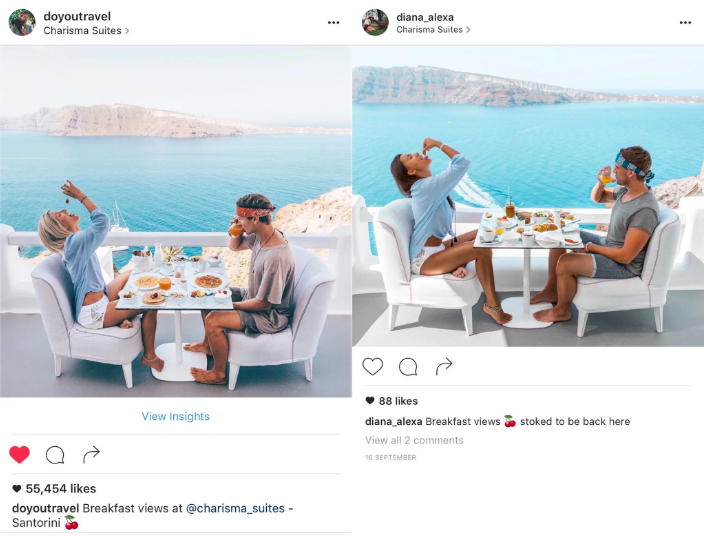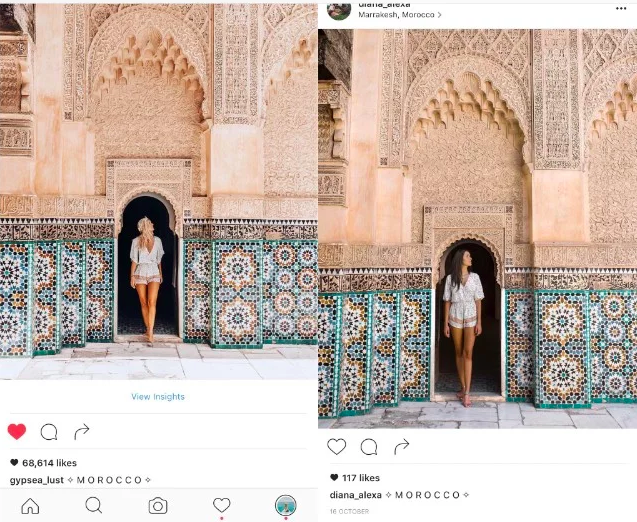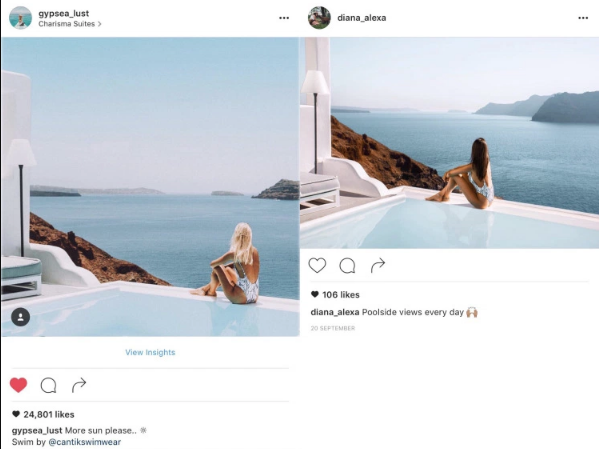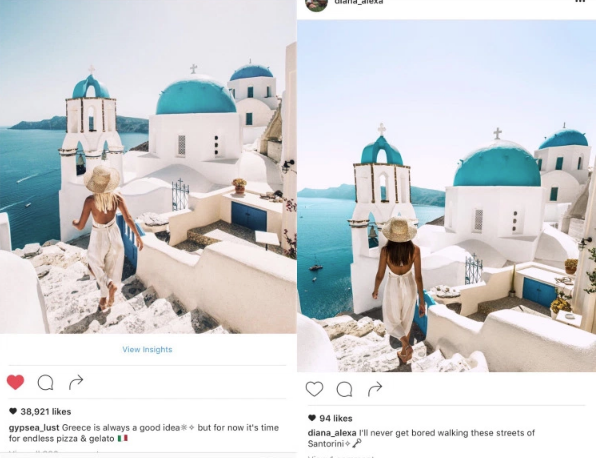These days it’s easy to plagiarize just about anything through technology. It is also easy to make people think that something is true, when it isn’t. It wouldn’t even be a surprise if you have encountered works that were plagiarized blatantly and yet, people behind it are still proud of it.
But then again, not all claims can be considered true. Take for example this case back in 2016. Blogger Lauren Bullen claimed that someone is copying most of her Instagram photos. The copycat was very meticulous that it was already creepy. Everything was copied — the location, clothes, pose, and even the captions.




But something was problematic about the whole scenario: why would someone go to great lengths of following after her, buying the same set of clothes, and going to the exact locations she went just to copy her Instagram photos? That’s absurd, and well, very expensive. It would have been more convincing if she just stole Bullen’s photos and pretended it to be her. That happens more often on the internet and let’s admit it, it’s easier to do and less expensive. The alleged copycat does not even have a lot of followers on her account that it will make you wonder why she would bother spending a lot of money just to copy someone’s photos.
Interesting, right? Some thought so too. They tried to look into the matter and an interesting theory came up. Since they cannot scrub any other information about the alleged copycat, someone found a cached data that indicates the relationship of Diana with Bullen.
In the cached data of Diana’s Twitter account, she listed Bullen’s email and blog (gypsea_lust) that made people conclude that the two were actually associated. After all, Bullen did say that she settled things with Diana after discovering the plagiarized photos (the account has since been made private).
Though Bullen defended that the whole incident wasn’t a hoax, the evidences remain circumstantial.
A word of advice then: don’t believe everything you see on the internet. Verify, research, and take everything with a grain of salt.
—
Other stories you might like:
Graffiti and copyright: Why big brands can’t just use street artists’ work without consent
This ‘selfie-worthy museum’ in Indonesia rips off international artists’ works
Wikipedia keeps ‘receipts’ of Mocha Uson’s fake news with an updated list
Radiohead is suing Lana Del Rey for copyright infringement over her song ‘Get Free’

